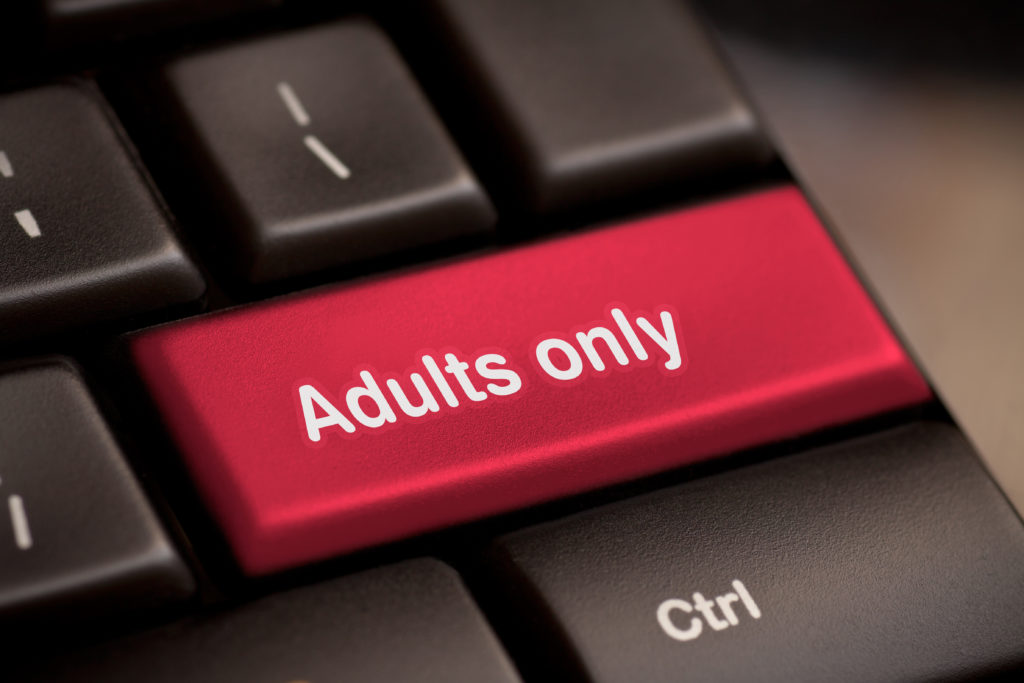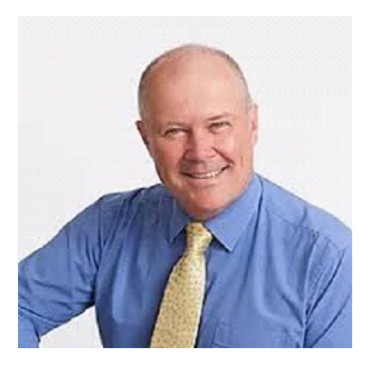Young People and the Online World of Pornography: Minimizing the Harm

By Russell Pratt, DPsych, MAPS, ATSAF
In the Summer 2020 issue of The New Circle, Lauren Busfield wrote “…the fact that our lives can exist mostly online has become a reality that we were not ready to face.” Further, children and adolescents are often more tech savvy than their parents. Parents struggle to keep up online with their tech-savvy children and understand that online life is the new norm. Parents who bemoan the fact that their children want to sit at a screen inside rather than run around outside and climb trees aren’t recognizing the social world of today’s youth.

However, while the online world provides many positives for young people, pornography is not one of them. The online sexual world, which I’ll refer to as “porn world,” grows daily and has become one of the largest Internet-based industries in the world. Young people have access to it, and do access it, with many believing it depicts reality. Although youths comfortably navigate their online world, most nonetheless have no idea of how pornography relates to “real world” sex or real-world sexual relationships and behaviors. Nevertheless, by age 15, most adolescents have viewed or been exposed to internet-based, explicit pornography.1,2
Adolescent Pornography Use in Context
Not only is consumption of pornography commonplace among teenagers, but at this time of social isolation, during which young people have far more time on their hands and may be less supervised by adults in their daily lives, it would be no surprise to learn that pornography use among adolescents not only continues, but in all likelihood has increased. It certainly appears to have done so for adults across the world. For instance, Pornhub, described as the world’s largest pornography website, has reported significant increases in use, with spikes occurring soon after social distancing measures were put into place. Indeed, the Internet has changed pornography, in content and in delivery, and has made “instant” pornography of all kinds accessible to all, including our children and teens.

We understandably worry about this. Does pornography have an impact on sexual development and sexual behavior in sexually developing pre-adolescents and teenagers? Probably. In one study of pornography’s “contribution” to the development of sexual beliefs, attitudes, and behaviors during childhood and adolescence, children’s developmental stage, including cognitive and emotional capacity, was an important factor in their ability to “decode” what they see, amplifying the potential impact of pornography.3 We should be concerned.
For many young people, pornography consumption may not have a powerful or distorting influence on their developing sexual attitudes, beliefs, expectations, and behaviors, whereas for others pornography use may be of great concern. To some degree, this depends on the frequency of use, the content and messages of viewed pornography, their own states of mind and cognitive and executive functioning skills, and their understanding of the world, coupled with their own developmental history, including the presence of adverse or traumatic childhood experiences.
How Do We Help?
In reality, we cannot stop adolescents from viewing pornography. It is simply too accessible, and many teens are simply too interested, for one reason or another. In fact, it’s almost certain that, without draconian strategies, many adolescents will continue viewing pornography. For this reason, when it comes to teenagers, harm minimization and risk management is a better strategy for managing pornography use, rather than attempting to “stamp it out,” both for adolescents at risk for all sorts of problems, including sexual behavior problems, and “everyday” adolescents. With pre-adolescent children, however, despite the difficulties, risk management should aim at prevention, rather than harm minimization, adopting the position that children should never be exposed to pornography.

So, how can we help manage child and adolescent use of pornography, minimize any harm that may be caused by pornography to developing sexual ideas and behaviors in children and teens, and provide adequate monitoring, support, and guidance?
A Practical and Considered Approach
Recognizing real concerns about pornography use by young people, as well as the likely impossibility of “ending” child and adolescent use of pornography, based upon our practice in Australia and our research, my colleague, Cyra Fernandes, and I have developed a harm minimization model, which we call the “Savvy Consumer” model. It is intended to help educate and guide children and adolescents as they encounter and eventually engage in the online world, and especially in preparation for “porn world.”
Online pornography use by teens, and in some cases pre-teens, will not stop. It is thus better and more effective to educate young people about the “truth” of pornography. If they are going to use pornography, better to do so in an informed, realistic, and moderate and controlled manner. Our goal is to help young people learn to recognise pornography for what it is, viewing and understanding it through more open eyes, knowing it is not a “real” depiction. That is, although often sexually stimulating, it is not to be confused with reality and what people actually want and do in relationships, or the way most people engage in sex. If we succeed, even partially, then our children are in a better place to avoid the possibility of distorted sexual beliefs and attitudes, and at decreased risk for problematic sexual behaviors harmful to others and themselves.

The first steps involve early and ongoing education and supervision, at home and in school, regarding the general online world. When begun during early childhood, these may be among the most important steps in avoiding later problems. Later steps expand to include porn world, focusing on pre-adolescents and increasingly on adolescents, and include on-going interactive discussions with young people about their questions, their curiosity, and/or their use of pornography.
For Educators and Parents
- Education regarding the broad risks of the internet should start by age 6, and increase over time as the child ages.
- Adopt zero tolerance for pornography use by pre-pubescent children.
- Approaching puberty, around age 11–12, sex education should incorporate both physical and relational aspects of sex. Education about internet-based pornography—porn world—should begin.
- By age 15, many teens will have viewed pornography; by 16, at the latest, sex education should include “what women and men want,” and what is healthy and normative, contrasted against pornography depictions of what others want and “normal” sexual behavior.
- Sex education should not assume a primary heteronormative perspective, in which heterosexuality is promoted as or assumed to be preferred sexual orientation, and it should not assume that females do not watch or are not influenced by pornography.
- Sex education should include skill building, helping to develop the skills and resources that allow young people to view pornography with a critical eye.


In addition, once a young person in a household begins accessing or is exposed to the Internet and other social media, parents should use net-nanny filtering, password protection, age verification, and parental monitoring as proactive strategies to protect the child, or the teen who accidentally comes across online pornography, or to supervise the “interested” young user who intentionally seeks out pornography.
Importantly, talk. The most protective thing parents can do when it comes to sex education, including discussions about pornography, is talk to their children, in an interactive and engaging manner, encouraging them to talk back. Let’s not pathologize adolescent use of pornography; let’s instead recognize it for the normative behavior and the interest it represents for adolescents as well as adults. Let’s provide guidance that focuses on the development of young people as “savvy consumers” of pornography, rather than poorly educated, unregulated, and unaware victims with sexual attitudes, beliefs, expectations, and behaviors shaped by their viewing of pornography.
1. Lim M.S.C., Agius, P.A., Carrotte, E.R., Vella, A.M., & Hellard, M.E. (2017). Young Australians’ use of pornography and associations with sexual risk behaviours. Australia and New Zealand Journal of Public Health, (4), 438-443.2. Mitchell, A., Patrick, K., Haywood, W., Blackman, P., & Pitts, M. (2014). National survey of Australian secondary students and sexual health 2013 (ARCSHS Monograph Series No 97). Melbourne: Australian Research Centre in Sex, Health and Society, Latrobe University.
3. Skau, B. (2007). Who has seen what when? Pornography’s contribution to the social construction of sexuality during childhood and adolescence. Unpublished Doctoral Thesis, Wilfrid Laurier University, Ontario, Canada.

Russ Pratt
Russ Pratt is a Forensic and Counselling Psychologist with over 20 years’ experience. Following over a decade at the South Eastern Centre Against Sexual Assault (SECASA), Russ was one of two Statewide Principal Practitioners for the Department of Health and Human Service Child Protection Program in Victoria, Australia. He was a member of the Victorian Therapeutic Treatment Board of the Victorian Health Minister between 2009 and 2017, and since 2017 has owned Prime Forensic Psychology. Russ has presented at over 60 national and international conferences, including as keynote speaker, and regularly writes, lectures, trains, and presents both in Australia and internationally.
